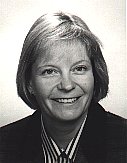|
 From Mrs. Barbara Walton, Director
From Mrs. Barbara Walton, Director
Salzburg Castles and Palaces Enterprises
Salzburg Regional Government
Dear friends of the 'Salzburg Bull',
In the summer of 2002, after almost seven years of silence the world-wide unique mechanical organ from the late middle ages, the Salzburg Bull' will again be able to roar.
The organ was installed as a form of siren/alarm clock in 1500 under the instruction of the Archbishop Leonard von Keutschach, who ruled the independent dukedom of Salzburg from 1495 until 1519. From then on the bull roared three times a day for nearly 500 years to remind the inhabitants of Salzburg of the time of day. The roar is actually a very strange organ sound, reminiscent of a bull roaring , hence the local name which has remained until this day: - the 'Salzburg Bull.'
The mechanical organ is to be found at Europe's biggest castle complex, the fortress of Hohenslazburg, which has stood majestically above the town, famous as the birthplace of Wolfgang Amadeus Mozart, since the 11th. century.
Naturally a not inconsiderable sum must be planned for and invested each year in order to maintain the historic buildings in a condition, commensurate with the expectations of the almost 1 million visitors from all over the world.
In addition to such necessary building maintenance, in 1995 the Department for Conservation sounded the alarm concerning the organ mechanism; to continue to play it three times a day would damage the drum and the pins set into it. They appealed for the restoration of the 'Salzburg Bull'.
At the end of the millennium renowned experts were contacted with regard to the renovation: - a firm of traditional organ builders in Lower Austria, whose heritage stretches back over generations, and an expert on barrel organ drums from Utrecht, known for his work throughout the world, were selected to carry out the work.
Such specialist knowledge, however, has its price; by completion in the summer of 2002, the project will have accounted for a sum of 5 Million ATS (approx. 330,000 US$). The regional government of Salzburg and the Republic of Austria, the latter being the legal owner of the fortress of Hohensalzburg, have part financed the project. To make up the rest of the sum, the SBSB (Salzburg Castles and Palaces Enterprises, a department of the regional government, which is responsible for the historic site) has established with the help of international enthusiasts, the fund raising project: -
"Help make the Salzburg Bull roar again".
If you would also like to help rescue a unique cultural asset which has been recognised by UNESCO since 1997 as part of the world's cultural heritage, then please read the following pages of this web site.
As a sponsor your name will be engraved on a plaque and thereby preserved for posterity. In addition you will be invited as a guest of honour to the "reincarnation of the Bull' in Salzburg in June 2002. But even if this time you can't help financially, I am sure that the history of the 'Salzburg Bull' will be an enrichment for every knowledgeable reader and castle enthusiast.
With this in mind, my enthusiastic team at the fortress Hohensalzburg and I leave you with our best wishes from the musical town of Salzburg; home of the mediaeval bull's roar, the unforgettable music of Mozart and the well known musical, 'the Sound of Music.'
Barbara Walton
Director
Salzburg Castles and Palaces Enterprises
Salzburg Regional Government
Responsible for the fortress of Hohensalzburg, the Salzburg Residence - for many centuries home of the prince-archbishops, the fortress of Hohenwerfen, and Mauterndorf castle.
Go To Table of Contents
| 






 OR
OR
















 OR
OR








